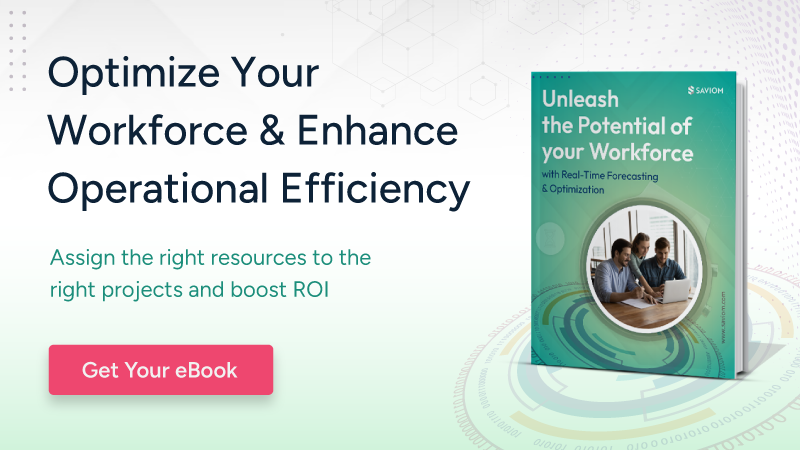“A goal without a plan is just a wish,” is a popular saying, and nowhere is this more evident than in the business landscape.
Picture a crew rowing a boat with intense effort. Despite their individual hard work, the boat spins in circles, making no progress towards the finish line.
Similarly, companies without effective operational planning fail because team members are not aligned on shared objectives. Instead, they work independently on tasks that do not contribute to the overarching goals, leading to inefficiencies and a lack of progress.
This is why implementing operational planning is imperative. It helps you break the company-wide plan into monthly, quarterly, half-yearly, or annual goals. This also optimizes processes, utilizes resources effectively, and fosters a culture of continuous improvement and innovation in the company.
Read this blog to delve into the nuances of operational planning and the essential steps to develop an effective one in the firm. But before that, let’s look at the definition of operational planning.
What is Operational Planning?
Operational planning is the process of defining the daily activities and processes required for an organization or department to achieve its broader strategic objectives. It involves creating a clear, actionable roadmap that aligns everyday operations with the organization’s long-term vision.
Now, let’s look at the various types –
Types of Operational Plan
A Single-use Plan: Also known as a specific plan, it is developed for non-recurring or single projects or events with a clear start and end dates. Once the project/event is over, the plan is discarded and not used again.
Examples:
- For launching a new product.
- To organize a company’s special promotional campaign.
A Standing Plan: Also called a multiple-use plan, it can be used repeatedly whenever a similar situation arises. This plan comprises standards and procedures to ensure smooth workflow in daily operations and can undergo modification as per the business needs.
Examples:
- A plan for handling customer service inquiries.
- A code of conduct policy mentioning workplace behavior and ethics.
Now that we know the types, let’s move on to the benefits of having an operation plan.
Read More: 7 Steps to Build a Winning Operational Strategy for Your Business
Key Benefits of Operational Planning for Firms
The following points highlight the significant advantages that operational planning provides to businesses:
Provides a Roadmap to Achieve Strategic Business Objectives
Operational planning breaks down long-term objectives into smaller, manageable tasks and milestones. This granular approach ensures daily operations align directly with the company’s strategic vision. Moreover, the detailed roadmap provides clarity and direction, helping employees understand how their individual efforts contribute to the company’s success.
Minimizes Operational Expenses
Operational planning enables companies to identify inefficiencies, redundancies, and waste in their processes. This allows them to streamline workflows, optimize resource allocation, manage inventory, and reduce unnecessary expenses. Operational planning also helps in budgeting and forecasting, which can prevent overspending and improve financial management.
Increases Resource Productivity & Engagement
Operational planning helps allocate resources (human, financial, and material) to the right task at the right time. By clearly defining roles, setting achievable targets, and providing the necessary tools and training, employees can perform their tasks more efficiently, thereby improving productivity. Additionally, when employees understand how their work contributes to larger company goals, they tend to be more engaged and motivated.
Read More: 11 Effective Strategies to Enhance Employee Engagement
Allows Proactive Risk Identification & Mitigation
A robust operational plan incorporates effective risk management strategies within its framework. It enables organizations to outline potential operational risks and develop contingency plans to minimize the impact of these events on overall operations. For example, identifying common supply chain risks enables firms to create a list of alternative suppliers and leverage them whenever necessary to maintain operational stability and curb production delays.
Improves the Decision-Making Process
Operational planning offers companies an organized framework within which decisions are to be made. It enables firms to assess current situations, collate real-time insights, weigh the pros and cons, and make data-driven decisions based on the evaluation. For example, a financial company can analyze current market trends and economic forecasts to adapt its investment strategies swiftly and maximize revenue.
Enhances Product/Service Delivery & Maximizes ROI
Operational planning plays a critical role in streamlining the entire product/service delivery lifecycle. It allows organizations to automate processes, reduce waste and costs, and enhance resource usage. This results in faster turnaround times and high-quality outcomes. Therefore, it helps maximize return on investment (ROI) and improve customer satisfaction.
Read More: How to Enhance Customer Experience Using Resource Management Software?
Let’s now look at the steps for creating an efficient operations plan.
How to Create an Operational Plan?
Developing an operational plan is not a one-and-done exercise. It’s a continuous process to ensure that day-to-day operations align with broader organizational objectives. As a result, operational plans need to evolve as and when strategic goals change.
Below mentioned are the key steps for creating an efficient one –
Identify Operational Goals and Align Them with the Strategic Plan
The first step in developing an operational plan is to understand and analyze the organization’s long-term, strategic goals. These high-level objectives can be broken down into smaller, achievable goals to allow firms to better visualize what they need to accomplish on a short-term or daily basis. This top-down approach helps businesses create realistic operational targets that align with broader organizational objectives.
Break Down the Goals into Daily Tasks and Activities
The next step is to break down the operational goals into manageable daily tasks and activities. By narrowing down the scope of work, managers can clearly outline the resource requirements, including equipment, staff, time, and financials, needed for daily operations. It also helps organizations establish daily operational functions of every team and department.
Read More: Effective Ways to Create a Work Breakdown Structure
Determine the Timelines and Create a Detailed Budget
Establishing realistic timelines and creating a comprehensive budget is crucial for successful operational planning. Therefore, managers should set deadlines for each task or activity, ensuring they are achievable and allow room for potential setbacks. Concurrently, they need to develop a detailed operational budget that accounts for all the costs associated with running an efficient operation.
Assign Appropriate Resources to Activities
In the next step, managers should identify and deploy appropriate human resources to various operational tasks based on attributes such as skills, competencies, location, cost, capacity, and availability. Similarly, they should assess the requirements for non-human resources and allocate the assets accordingly. Proper resource allocation ensures tasks are completed on time, thereby enhancing overall productivity and efficiency.
Establish Benchmarks and KPIs to Monitor Progress
As per PMI, “KPIs help build the value of/for an organization.”
Next, companies need to set up and regularly monitor benchmarks and KPIs to gauge the efficacy of the operational plan. The KPIs must be specific and measurable, while the benchmarks should be based on historical data or industry standards. Cumulatively, these metrics enable managers to identify discrepancies and make necessary adjustments to ensure operational continuity and maintain quality standards.
Read More: Top 15 Operational Metrics That a Business Should Monitor
Develop an Internal and External Communication Plan
Once the KPIs are set, managers must create a thorough communication plan for both internal and external stakeholders. This plan helps standardize communication procedures and specifies the appropriate usage of synchronous or asynchronous modes. Moreover, it keeps everyone in the loop and fosters effective collaboration between various participants.
Implement and Review the Operational Plan Regularly
Managers should set up periodic reviews to assess progress, address issues, and adjust the operational plan as needed. Regular evaluations help ensure that the plan aligns with the evolving business goals. Additionally, it helps identify emerging opportunities and threats, enabling organizations to stay agile and competitive in volatile market conditions.
Read More: How to Improve Operational Efficiency in Your Firm?
Conclusion
Operational planning enables businesses to achieve their long-term vision and goals efficiently. It helps cut down unnecessary costs, optimize internal processes, and boost employee productivity, resulting in better ROI and profitability.
By following the steps mentioned above, you can create a robust plan that addresses the existing bottlenecks and empowers you to achieve operational excellence.
Are you prepared to enhance your operational planning and reap its advantages?
The Glossary
Read More: Glossary of Resource Workforce Planning, Scheduling and Management
The SAVIOM Solution
SAVIOM is undoubtedly the market leader in offering the most powerful and configurable Enterprise Resource Management Solution. Having more than 20 years of experience, this Australian-based MNC has a global presence in over 50 countries. It is also popular with more than 100 customers and helps them to achieve their business goals. SAVIOM also has products for project portfolio management, professional service automation, and workforce planning software which can be easily customized per business requirements.










